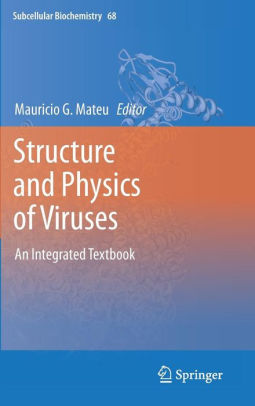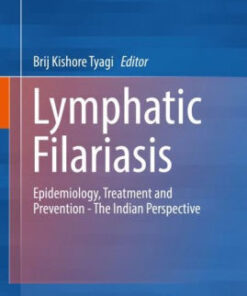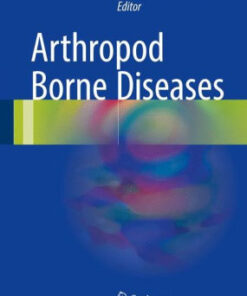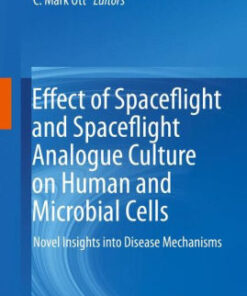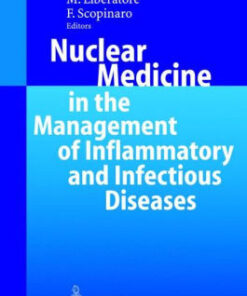(PDF) Structure and Physics of Viruses by Mauricio G. Mateu
$32.00
Download instantly Structure and Physics of Viruses – An Integrated Textbook by Mauricio G. Mateu. It is ebook in PDF format.
ISBN-10: 9400765517 ISBN-13: 9789400765511
Preview
This is the PDF eBook version for Structure and Physics of Viruses – An Integrated Textbook by Mauricio G. Mateu
Table of Contents
Foreword
Preface
Contributors
Part I. The viral machine
1. Introduction: the structural basis of virus function
1.1 The structure and physics of viruses
1.2 Virions and their structural components
1.3 Techniques used to study the structure and physics of viruses
1.4 The roles of virus particles and their components along the virus life cycle
1.5 Experimental and theoretical developments in physical virology
1.6 Applied structural and physical virology
1.7. Concluding remarks
Acknowledgements
References and further reading
2. The basic architecture of viruses
2.1 Introduction
2.2 How virus structures are studied
2.3 Viral capsid symmetry
2.4 Quasi-equivalence theory and icosahedral capsid architecture
2.5 Variations on the icosahedral capsid theme: multiple layers and prolate icosahedra
2.6 Helical capsids
2.7 The viral nucleic acid inside
2.8 Basic architecture of enveloped viruses
Acknowledgements
References and further reading
Part II. Determination of the structure and physical properties of viruses
3. Conventional electron microscopy, cryo-electron microscopy and cryo-electron tomography of viruses
3.1 Introduction
3.2 Transmission electron microscopy of viruses
3.3 Cryo-electron microscopy of viruses
3.4 Cryo-EM image processing and three-dimensional reconstruction
3.5 Near-atomic resolution of virus structures by cryo-EM3.6Reconstructing viruses without imposing symmetry
3.7 Reconstructing viruses with helical symmetry
3.8 Cryo-electron tomography of viruses
3.9 Understanding viruses: some major contributions of electron microscopy and tomography
3.10 Perspectives
Acknowledgements
References and further reading
4. X-ray crystallography of viruses
4.1 Introduction
4.2 Basic concepts and general experimental design
4.3 Production and purification of viral particles and proteins for structural studies
4.4 Crystallization
4.5 Data collection and processing
4.6 Phase determination
4.7 Map interpretation
4.8 Understanding viruses: some major contributions of X-ray crystallography
4.9 Perspectives
Acknowledgements
References and further reading
5. Nuclear magnetic resonance spectroscopy to study virus structure
5.1 Introduction
5.2 Physical principles of NMR spectroscopy
5.3 Determination of biomolecular structures by NMR spectroscopy
5.4 NMR structures of viral macromolecules
5.5 Understanding viruses: some major contributions of NMR spectroscopy
5.6 Perspectives
Acknowledgements
References and further reading
6. Fluorescence, circular dichroism and mass spectrometry as tools to study virus structure
6.1 Introduction
6.2 Physical principles of fluorescence and circular dichroism (CD) spectroscopies
6.3 Fluorescence and CD spectroscopies to study virus structure
6.4 Mass spectrometry (MS) as an analytical tool
6.5 MS to study virus structure
6.6 Perspectives
Acknowledgements
References and further reading
7. Combined approaches to study virus structure
7.1 Introduction: the ‘multi-disciplinary approach’ concept in structural virology
7.2 Some classical methods in structural virology: a brief overview
7.3 Combining X-ray crystallography and electron microscopy
7.4 Dissecting virus structures by combining biochemical, genetic and biophysical tools
7.5 Combining electron microscopy and electron tomography
7.6 From virus in solution to virus in cells
7.7 Emerging hybrid methods
7.8 The biology behind the combined methods
Acknowledgements
References and further reading
8. Atomic force microscopy of viruses
8.1 Introduction
8.2 Basic concepts
8.3 AFM implementation
8.4 Imaging viruses and other biological objects
8.5 Understanding viruses: some major contributions of AFM
8.6 Perspectives
Acknowledgements
References and further reading
9. Optical tweezers to study viruses
9.1 Introduction: life machinery at the nanoscale
9.2 Basic concepts and general experimental design
9.3 Optical tweezers
9.4 Operation
9.5 Understanding viruses: some major contributions of optical tweezers
9.6 Perspectives
Acknowledgements
References and further reading
Part III. Structural foundations of virus properties and functions
10. Assembly of simple icosahedral viruses
10.1 Introduction
10.2 Icosahedral capsids: symmetry and genetic regulation
10.3 Capsid building blocks and assembly intermediates
10.4 Forming the capsid
10.5 Genome encapsidation and virus maturation
10.6 Perspectives and conclusions
Acknowledgements
References and further reading
11. Structure and assembly of complex viruses
11.1 Introduction
11.2 Molecular composition of complex viruses
11.3 Departures from symmetry in quasi-icosahedral capsids
11.4 Asymmetric virus particles
11.5 Sophisticated regulation of assembly & maturation
11.6 Perspectives and conclusions
Acknowledgements
References and further reading
12. Nucleic acid packaging in viruses
12.1 Introduction.
12.2 Structural features of the packaged nucleic acids
12.3 Reorganization of the viral capsid during nucleic acid packaging
12.4 Components of the packaging machinery
12.5 Models for nucleic acid packaging
12.6 Perspectives and conclusions
Acknowledgements
References and further reading
13. Virus maturation
13.1 Introduction
13.2 Immature virus particles and maturation strategies
13.3 Tetravirus capsid maturation
13.4 Herpesvirus nucleocapsid maturation
13.5 Maturation of the human immunodeficiency virus capsid
13.6 The role of glycosylation in virus maturation
13.7 Virus polyhedra: virus-derived assemblages for long-term survival
13.8 Perspectives and conclusions
Acknowledgements
References and further reading
14. Virus morphogenesis in the cell: methods and observations
14.1 Introduction: cell biology of virus morphogenesis and the concept of the virus factory
14.2 Methods for the study of virus-cell interactions during morphogenesis
14.3 Molecular mapping of viral morphogenesis
14.4 The search for signalling pathways
14.5 Perspectives and conclusions
Acknowledgements
References and further reading
15. Virus-receptor interactions and receptor-mediated virus entry into host cells
15.1 Introduction: virus entry into host cells, the recognition of cell surface molecules
15.2 Virus-receptor interactions and receptor specificity switch
15.3 Non-enveloped virus entry into host cells: the uncoating process
15.4 Perspectives and conclusions
Acknowledgements
References and further reading
16. Entry of enveloped viruses into host cells: membrane fusion
16.1 Introduction
16.2 General principles of membrane fusion
16.3 Viral fusion proteins
16.4 Early post-entry events
16.5 Perspectives and conclusions
Acknowledgements
References and further reading
17. Bacteriophage receptor recognition and nucleic acid transfer
17.1 Introduction
17.2 Proteins used in receptor recognition and nucleic acid transfer
17.3 Perspectives and conclusions
Acknowledgements
References and further reading
18. Mechanical properties of viruses
18.1 Introduction
18.2 Mechanical stiffness of virus particles determined by AFM in indentation assays
18.3 Intrinsic elasticity of virus capsids: Youn?s modulus
18.4 Brittleness and material fatigue of virus capsids
18.5 A case study: mechanics of bacteriophage f29
18.6 Differences and variations in virus mechanical properties
18.7 Structural determinants of the mechanical properties of viruses
18.8 Mechanical properties and virus biology
18.9 Engineering mechanical properties of virus particles
18.10 Perspectives and conclusions
Acknowledgements
References and further reading
19. Theoretical studies on assembly, physical stability and dynamics of viruses
19.1 Introduction
19.2 Architecture of viral shells
19.3 Assembly of viruses
19.4 Mechanical stability of capsids
19.5 Genome delivery and virus egress
19.6 Perspectives and conclusions
Acknowledgements
References and further reading
Part IV. Applied structural and physical virology
20. Antiviral agents: Structural basis of action and rational design
20.1 Introduction
20.2 Drug discovery and potential targets of antiviral intervention
20.3 Antiviral drugs and mechanisms of action
20.4 Strategies in the development of antiviral drugs: from random screening to structure-based design
20.5 Case studies in structure-based antiviral drug development
20.6 Viral capsids as targets of antiviral intervention
20.7 Perspectives and conclusions
Acknowledgements
References and further reading
21. Design of novel vaccines based on virus-like particles or chimeric virions
21.1 Introduction
21.2 Immunology of vaccines, an overview
21.3 The role of size, geometry and molecular patterns in vaccine design
21.4 Virus-like particles (VLPs) as antiviral vaccines
21.5 VLPs as platforms for foreign antigen display. Structure-based engineering of VLPs for vaccine development
21.6 Use of plant and insect-derived chimeric virions for foreign antigen display
21.7 Perspectives and conclusions
Acknowledgements
References and further reading
22. Nanoscale science and technology with plant viruses and bacteriophages
22.1 Introduction: viral vs. artificial (synthetic) nanostructures
22.2 The control of surface chemistry by genetic engineering and by chemical reactions
22.3 Modification of viruses with functional material
22.4 Hierarchical assembly into complex structures
22.5 Nanoscale analysis and manipulation
22.6 Viruses as templates
22.7 Electronic devices
22.8 Biochemical detection arrays and targeted drug delivery
22.9 Other systems
22.10 Perspectives and conclusions
Acknowledgements
References and further reading
